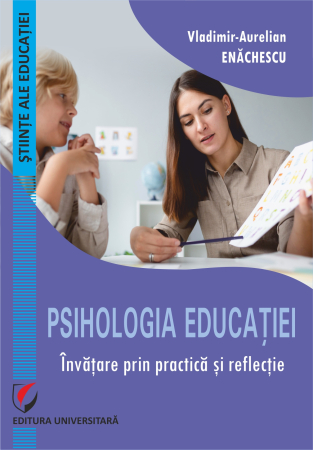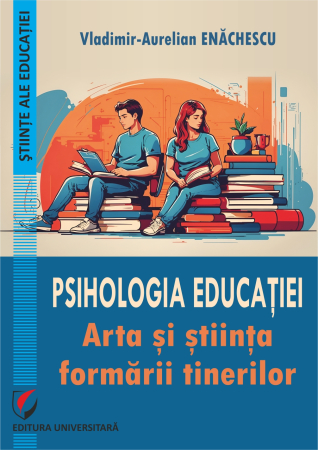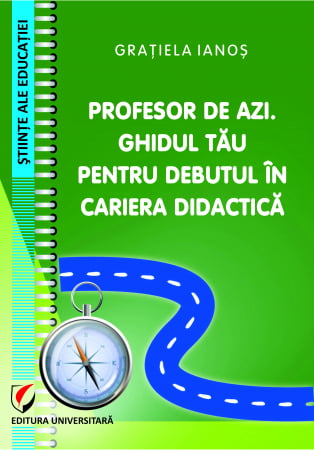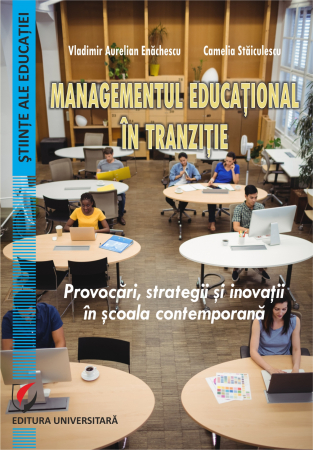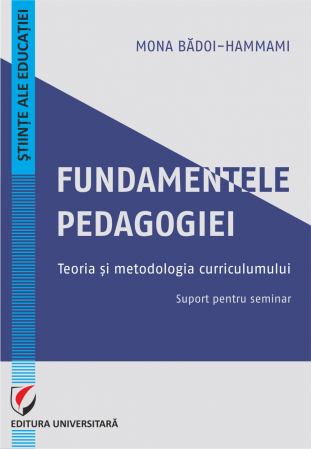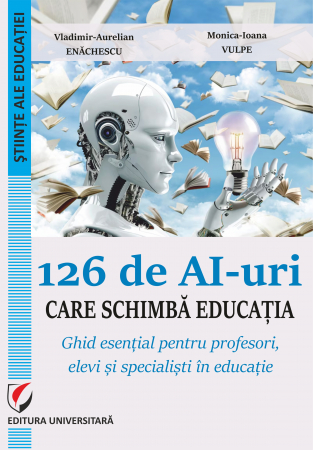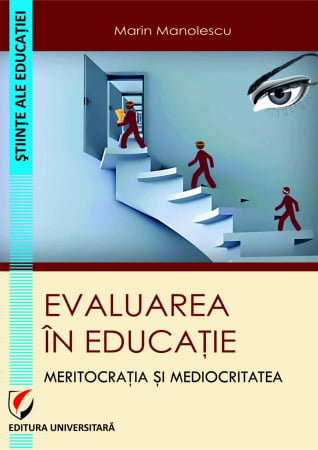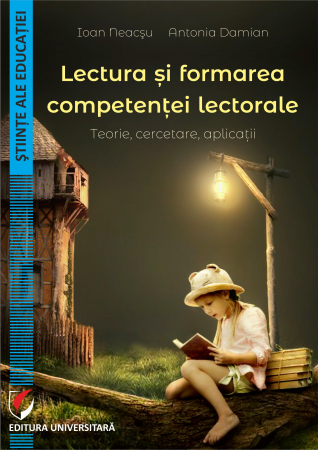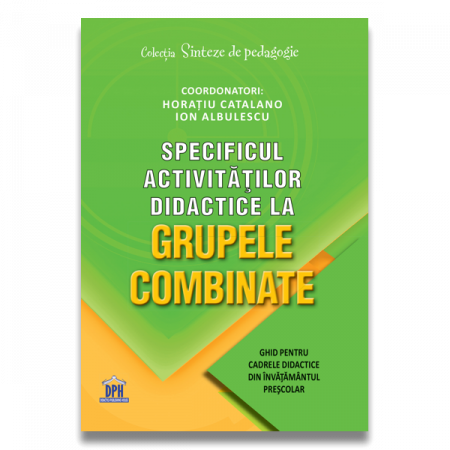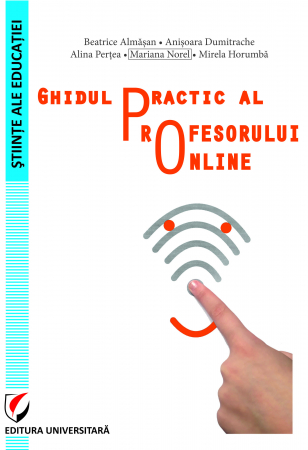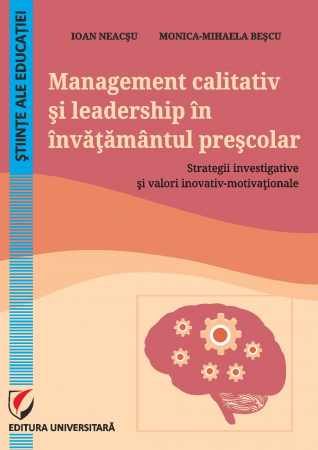Manuscript proposals: [email protected] / 0745 204 115 //// Tracking orders Individuals / Sales: 0745 200 357 / Orders Legal entities: 0721 722 783
6359.png) Interactive assessment strategies. Premises of innovation in the education process in primary classes - Anca Elena Ionita (Cristea)
Interactive assessment strategies. Premises of innovation in the education process in primary classes - Anca Elena Ionita (Cristea)
6359.png)
Publisher: Editura Universitară
Author: Anca Elena Ionita (Cristea)
Edition: I
Pages: 186
Publisher year: 2023
ISBN: 978-606-28-1619-3
DOI: https://doi.org/10.5682/9786062816193
Product Code:
9786062816193
Do you need help?
0745 200 357
- Description
- Download (1)
- Authors
- Content
- More details
- Reviews (0)
It is very important that we, the teaching staff, change the perception of students and parents on the concept of evaluation. We can do this by using interactive assessment strategies in the instructional-educational process. Students want to overcome their fears, overcome self-doubt, be creative, find solutions to problems. I believe that by alternating classic assessment methods with modern assessment methods, placing more emphasis on modern, interactive ones, a relaxing, attractive learning environment can be created, helping children not to know books but to learn books.
Author
Author
-
Interactive assessment strategies. Premises of innovation in the education process in primary classes
Download
ANCA ELENA IONITA (CRISTEA)
INTRODUCTION / 7
Interactivity in the evaluation process / 7
CHAPTER I - EVALUATION IN PRIMARY EDUCATION / 11
1. The dynamics of school assessment definitions. Semantic evolutions / 11
2. Specifics of evaluation in primary education / 14
a) Current evaluation / 18
b) National evaluation / 25
CHAPTER II - INTERACTIVE STRATEGIES IN THE EVALUATIVE PROCESS / 31
1. Evaluation strategy: conceptualization / 31
2. Typology of evaluation strategies / 35
a) Classification / 35
b) Description / 38
3. Examples of interactive evaluation strategies / 41
CHAPTER III - EVALUATION DURING ONLINE SCHOOL / 64
Online school / 64
Challenges and limits of online school during the pandemic / 72
Digital evaluation / 75
Methods of assessment in online school / 82
Evaluation in the post-pandemic period / 89
CHAPTER IV - EXAMPLES OF GOOD PRACTICES REGARDING INTERACTIVE ASSESSMENT STRATEGIES USED IN THE CLASSROOM / 94
CONCLUSIONS / 120
ANNEXES / 123
BIBLIOGRAPHY / 179
Interactivity in the evaluation process / 7
CHAPTER I - EVALUATION IN PRIMARY EDUCATION / 11
1. The dynamics of school assessment definitions. Semantic evolutions / 11
2. Specifics of evaluation in primary education / 14
a) Current evaluation / 18
b) National evaluation / 25
CHAPTER II - INTERACTIVE STRATEGIES IN THE EVALUATIVE PROCESS / 31
1. Evaluation strategy: conceptualization / 31
2. Typology of evaluation strategies / 35
a) Classification / 35
b) Description / 38
3. Examples of interactive evaluation strategies / 41
CHAPTER III - EVALUATION DURING ONLINE SCHOOL / 64
Online school / 64
Challenges and limits of online school during the pandemic / 72
Digital evaluation / 75
Methods of assessment in online school / 82
Evaluation in the post-pandemic period / 89
CHAPTER IV - EXAMPLES OF GOOD PRACTICES REGARDING INTERACTIVE ASSESSMENT STRATEGIES USED IN THE CLASSROOM / 94
CONCLUSIONS / 120
ANNEXES / 123
BIBLIOGRAPHY / 179
Evaluation is present in any field of activity, having an important role in the efficiency of activities of any type. Education is a field of maximum social importance in which evaluation is one of the basic components. Thus, along with the changes that have occurred over time in the educational process, the concept of evaluation has undergone significant transformations. At the beginning, the evaluation was perceived strictly as the measurement of the students' results. Then, the evaluation was approached from the perspective of the educational objectives. Nowadays, evaluation is viewed from a modern perspective, there are a multitude of definitions of evaluation. Evaluation is a "complex didactic act, integrated into the entire educational process" that emphasizes both the quantity and the quality of the knowledge acquired by the student (Bontas, 2001), it is "a system of concepts, principles and techniques related to the measurement and appreciation of results schools" (Radu, 1995), it is "a process" through which useful information is obtained that "allows subsequent decisions to be made" (Cucos, 2008b), it is "a complex process" of comparing the results with the planned objectives and with the resources used (Jinga, 1998) or it is "an activity through which value judgments are issued about the process and product of the student's learning based on pre-established qualitative criteria in order to make decisions on regulation, improvement, selection, etc." (Manolescu, 2010). This diversity of definitions of the evaluation concept, at first glance, can lead us to think that there is currently no unitary model, coherence, consensus regarding the theory of evaluation. However, there is a common note in the multitude of approaches to the evaluation concept, namely "the idea that evaluation is an integral part of a whole and should not be treated in isolation, but in close connection with (...) teaching and learning .” (Manolescu, 2010)
Therefore, in recent years, the assessment has seen a series of significant changes that marked the transition from a traditional assessment to a modern assessment. For example, in the classical sense, evaluation was perceived as "verification", "control", "examination", while, from the modern perspective, evaluation is perceived as an "evaluative activity" that accompanies the teaching-learning process step by step. We also note the introduction of the concepts of formative assessment, formative assessment, co-responsibility of the learner, focus on competences, etc.
Interactivity is part of the scope of new, modern concepts for approaching the entire educational process. This involves communication, collaboration, confrontation of ideas, opinions and arguments, creates learning situations centered on the children's availability and desire to cooperate, on their direct and active involvement, and at the same time it requires an accumulation of qualities and availability on the part of the teaching staff: receptivity to new, adapting the teaching style, mobilization, desire for self-improvement, reflexive and modern thinking, creativity, intelligence to accept the new and great flexibility in concepts.
We are talking about interactivity in the classroom when there is a relationship between students or between a student and a teacher, inter and intragroup relationships, relationships in which the subjects know each other, in which "the teacher must know and organize the study material well, imagine different solutions to the students' reactions/answers and to design differentiated learning paths, adapted to potential students." (Oprea, 2007).
The interactivity of an evaluation strategy is given by the interrelationship and collaboration between teacher and student, as well as by the expansion of the range of evaluation methods used by the teaching staff in the classroom, from classical methods to modern methods. "Interactive evaluation considers the appreciation, development, continuous improvement, control, empowerment of the educated with capacities intended to make him able to support and control (self-evaluate) his learning processes, the permanent dialogue between partners being based on mutual trust and on responsibility." (Oprea, 2007).
Seen from the point of view of interactivity, the evaluation becomes a tool in the hands of the student that helps him to become aware of what he has acquired (knowledge, skills, abilities, cognitive structures, abilities, etc.) being interested in the processes that facilitate his learning and allow him to regulate and its improvement. In other words, it becomes a tool through which the student learns to learn. In this sense, the teacher must help the student to develop his self-knowledge and self-evaluation skills.
Therefore, the course that the concept of evaluation has had, over time, as well as the fact that currently there are still many approaches to evaluation, led me to elaborate this work, trying to demonstrate, until the end, the fact that evaluation is not a "necessary evil of the educational system" but a "necessity" of the educational system.
Therefore, in recent years, the assessment has seen a series of significant changes that marked the transition from a traditional assessment to a modern assessment. For example, in the classical sense, evaluation was perceived as "verification", "control", "examination", while, from the modern perspective, evaluation is perceived as an "evaluative activity" that accompanies the teaching-learning process step by step. We also note the introduction of the concepts of formative assessment, formative assessment, co-responsibility of the learner, focus on competences, etc.
Interactivity is part of the scope of new, modern concepts for approaching the entire educational process. This involves communication, collaboration, confrontation of ideas, opinions and arguments, creates learning situations centered on the children's availability and desire to cooperate, on their direct and active involvement, and at the same time it requires an accumulation of qualities and availability on the part of the teaching staff: receptivity to new, adapting the teaching style, mobilization, desire for self-improvement, reflexive and modern thinking, creativity, intelligence to accept the new and great flexibility in concepts.
We are talking about interactivity in the classroom when there is a relationship between students or between a student and a teacher, inter and intragroup relationships, relationships in which the subjects know each other, in which "the teacher must know and organize the study material well, imagine different solutions to the students' reactions/answers and to design differentiated learning paths, adapted to potential students." (Oprea, 2007).
The interactivity of an evaluation strategy is given by the interrelationship and collaboration between teacher and student, as well as by the expansion of the range of evaluation methods used by the teaching staff in the classroom, from classical methods to modern methods. "Interactive evaluation considers the appreciation, development, continuous improvement, control, empowerment of the educated with capacities intended to make him able to support and control (self-evaluate) his learning processes, the permanent dialogue between partners being based on mutual trust and on responsibility." (Oprea, 2007).
Seen from the point of view of interactivity, the evaluation becomes a tool in the hands of the student that helps him to become aware of what he has acquired (knowledge, skills, abilities, cognitive structures, abilities, etc.) being interested in the processes that facilitate his learning and allow him to regulate and its improvement. In other words, it becomes a tool through which the student learns to learn. In this sense, the teacher must help the student to develop his self-knowledge and self-evaluation skills.
Therefore, the course that the concept of evaluation has had, over time, as well as the fact that currently there are still many approaches to evaluation, led me to elaborate this work, trying to demonstrate, until the end, the fact that evaluation is not a "necessary evil of the educational system" but a "necessity" of the educational system.
If you want to express your opinion about this product you can add a review.
write a review

![Interactive assessment strategies. Premises of innovation in the education process in primary classes - Anca Elena Ionita (Cristea) [1] Interactive assessment strategies. Premises of innovation in the education process in primary classes - Anca Elena Ionita (Cristea) [1]](https://gomagcdn.ro/domains/editurauniversitara.ro/files/product/large/strategii-interactive-de-evaluare-premise-ale-inovarii-in-procesul-de-invatamant-la-clasele-primare-336963.jpg)
